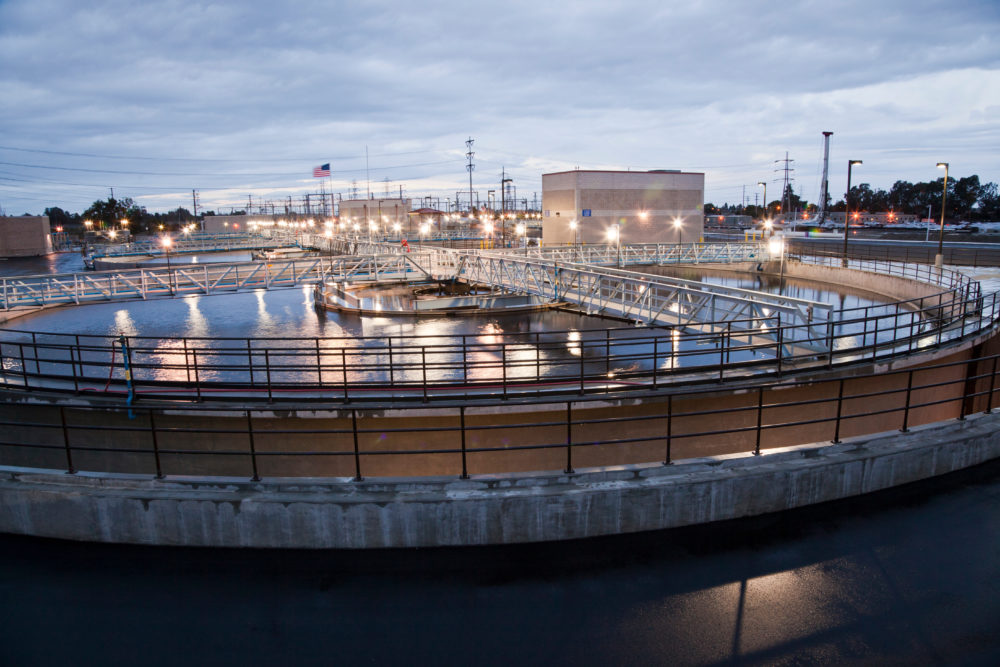
Mark Kawamoto and his team at Orange County Sanitation District, also known as OC San, are trying to solve a riddle:
“How does PFAS make its way into water resource recovery facilities?”
PFAS are in wastewater that is treated at water resource recovery facilities (WRRFs), including at OC San’s two facilities, but the source of these ‘forever chemicals’ is not clear.
“The State Water Board asked if there were any manufacturers in the state, but no one has been identified yet,” says Kawamoto, Environmental Protection Manager in OC San’s Environmental Services Department. “Our treatment facilities are not adding PFAS to the wastewater, and we don’t produce PFAS. They’re coming to us from other sources.”
Finding those sources and reducing or eliminating PFAS is the focus of a comprehensive OC San project that will take several years and involves a number of partners.
WELCOME TO THE OC
OC San is one of the largest wastewater agencies west of the Mississippi River, collecting, treating and recycling wastewater from over 2.6 million people in central and northern Orange County.
Its two WRRFs —in Fountain Valley and Huntington Beach — process a combined average daily flow of approximately 180 million gallons a day (MGD).
Up to 130 MGD of treated effluent is processed further via the Groundwater Replenishment System, a collaborative project with Orange County Water District. Microfiltration, reverse osmosis, and ultraviolet light with hydrogen peroxide purifies the water before it is injected into the aquifer to prevent seawater intrusion and to augment drinking water supplies. Reverse osmosis is one of the treatment technologies known to screen out PFAS.
Starting in 1970, OC San built a comprehensive industrial pretreatment program to prevent manufacturers and industrial facilities from sending toxic compounds into the sewer system.
Initially the effort was to protect OC San’s facilities and workers, but OC San’s pretreatment program evolved with the Federal pretreatment program requirements that resulted from the Clean Water Act amendments passed in 1972.
THE SEARCH FOR PFAS
In 2020, the State Water Resource Control Board issued an investigative order requiring WRRFs to monitor for PFAS. OC San tested its wastewater and biosolids, and like most utilities, detected low levels of the chemicals entering and exiting its facilities.
Kawamoto and the OC San team are now looking more closely at household discharges as a possible source.
In a research paper by Steven Luis from Ramboll and Matt Smith from OC San, discharges from residential areas and commercial businesses were determined to be potential sources of PFAS for many WRRFs. Their research was informed by data generated by the State’s investigative order.
The authors also cite an Australian report, which found PFAS in all of the WRRFs studied, even though the industrial contribution was comparatively low. The authors also reviewed New York state data confirming PFAS in all samples taken from residential septic tanks.
Identifying and controlling the discharge of PFAS from households or commercial establishments is no simple matter, Kawamoto points out.
“Products in our homes contain PFAS,” he says. “These products include waterproof clothing, upholstery, carpeting, cosmetics, and non-stick coatings applied to cooking pans. They’re useful and we enjoy the benefits, but are these chemicals being washed down the drain and into sewer systems?”
“We can ban the manufacture of PFAS in this country, but we import household and commercial products from other countries where PFAS may not be prohibited,” he noted.
Even if we change the composition of products or how we use them, Mark points out PFAS compounds will still be around. “They don’t magically disappear.”
THE OC SAN PROGRAM
With so many questions surrounding the issue, what is OC San doing?
“We are working on the issue one piece at a time,” he said. “Our laboratory is the first wastewater agency in the state to be certified for testing for PFAS.”
A key to the program is to try to identify what Kawamoto calls “hot spots”—places in the system where PFAS originate or concentrate. It might be industry, or it might be residential neighborhoods.
Such testing and data collection are one part of what Kawamoto describes as a “toolbox” needed to address the issue, the contents of which include partnering with other agencies, funding public outreach, and coordinating information and communications.
Kawamoto explains that even though regulatory standards for PFAS in wastewater have not yet been established, and testing for the contaminants is expensive, his agency is working to track what’s coming into their treatment facilities.

OC San treatment plant secondary clarifier. Photo courtesy of OC San.
OC San is investigating industrial sources, and OC San is also part of a technical advisory group that is working with other agencies and the University of California Irvine (UCI) to look into residential sources. UCI is looking for the major sources of PFAS within households and the products that contain them.
Coordinating the message is important. “We can work with other agencies to develop a public information campaign. We need common message points, and we should share in the cost of the communication materials.”
Kawamoto stresses that national organizations like the National Association of Clean Water Agencies (NACWA) are part of the communication effort, in order to frame a consistent, accurate message about PFAS and their sources across the board, and to support adequate budgets for research.
“OC San is also collaborating with the California Association of Sanitation Agencies (CASA) and their PFAS committees”, adds Rebecca Long, OC San’s public information officer.
Treating PFAS once it is inside a WRRF is challenging and expensive. The Clean Water Act, which turned 50 in 2022, as well as organizations such as WEF, NACWA, CASA and CWEA have worked for decades on pollution prevention – preventing toxic chemicals from entering the sewer system in the first place.
“Our plants are designed to treat the three Ps,” says Kawamoto. “Pee, poop and paper, as it says in OC San’s What2Flush campaign. The focus needs to be on controlling PFAS at their sources, so they aren’t discharged into the sewer.”